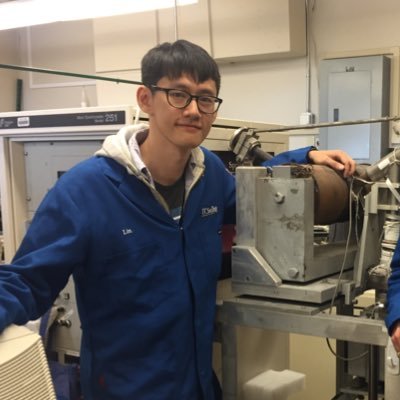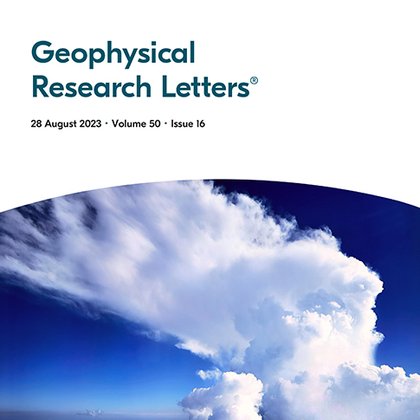
Lin, Mang
@mlinchem
Followers
98
Following
164
Media
5
Statuses
43
Prof of Isotope Chemistry at Guangzhou Inst of Geochem @UCAS1978 | Alumni of @UCSDChemBiochem | Origins & Evolutions of Solar System, Planet & Life
Guangdong
Joined January 2011
Excited to share our new paper in Science Advances! It marks my first step from oxygen and sulfur into hydrogen chemistry, a field I’ve been exploring with growing interest since last year.
A new study shows that rock fracturing in the deep subsurface of Earth’s crust produces both hydrogen gas and oxidants, driving iron redox cycling and sustaining microbial life in this isolated environment.
0
0
2
RT @YuqiiQian: Our work of the Chang'e-6 lunar basalts, the world's first lunar farside samples has been published by @ScienceMagazine toda….
0
12
0
RT @geochemsoc: Professor Mark Thiemens, who is the discoverer of the mass independent isotope effect and a long standing member of the GS,….
0
4
0
A work led by my postdoc Xiaoxiao Yu shows that multiple sulfur isotopes of greigites indicate possible methane leakages from coastal marine environments. The unique isotopic signature may be useful for the refinement of global warming in the deep past.
agupubs.onlinelibrary.wiley.com
Isotopically heavy sulfides (both δ34S and Δ33S) and enrichment of ferrous iron are synchronically observed in greigite-bearing sediments Pyrite with elevated Δ33S in thick greigite-bearing sedim...
0
0
6
RT @NatureAstronomy: The Chinese Chang'e-6 mission will pick up a sample from the far side of the Moon. Here the three candidate landing si….
0
25
0
It is a great honor and also opportunity that allow me to exchange ideas and collaborate with the world’s smartest young scientists!.
Élise Devoie (@Queensu), Mang Lin (@mlinchem) and Vashan Wright (@DrVasshe, @UCSanDiego) will be joining our Earth 4D: Subsurface Science & Exploration program.
1
1
8
My student Binyan Yin's work on sulfur isotope mass-independent effects is featured on the front cover of the latest issue of @ACSEarthSpace .Please check it out: #MyACSCover.@ACS4Authors
0
3
6
Prior to the emergence of oxygenic photosynthesis (>3 billion years ago), how did life evolve antioxidant enzymes and adapt to O2? Where did the first O2 on our Earth come from? My colleagues proposed a "rocky" origin. Check our new paper in PNAS: .
pnas.org
Terrestrial reactive oxygen species (ROS) may have played a central role in the formation of oxic environments and evolution of early life. The abi...
0
2
9
RT @AstroSamantha: 仰观宇宙之大,俯察品类之盛,所以游目骋怀,足以极视听之娱,信可乐也。.Looking up, I see the immensity of the cosmos; bowing my head, I look at the multitud….
0
2K
0
RT @CarnegiePlanets: The final talk of the Basalts on Earth session is from @CarnegiePlanets postdoc @JamesDottin3 who is presenting a talk….
0
3
0
Our new paper recently published in @PNASNews was selected as the cover of the latest issue! A work with Prof. Mark Thiemens from @UCSDChemBiochem Check this out:
1
0
8
RT @carnegiescience: Marilyn Louise Fogel, an isotope geochemist whose work touched on a broad scope of subjects ranging from astrobiology….
0
34
0
RT @IsoCampCSI: IsoCamp 2022 will be held at UNM from June 20th to July 1st 2022! Applications will be accepted from January 1st to Februar….
0
25
0










